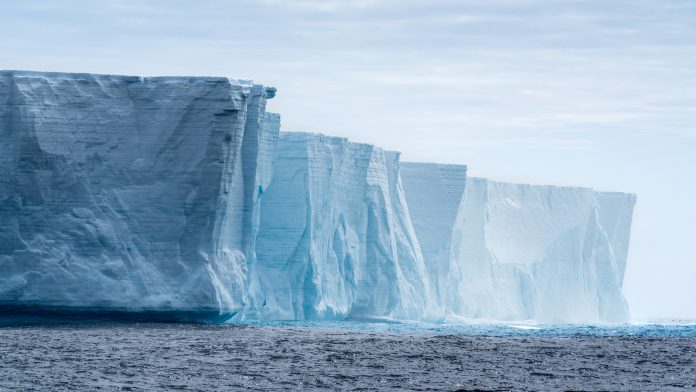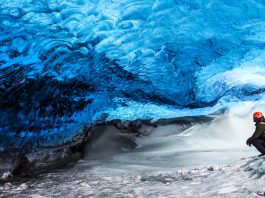Scientific research has indicated that the ice shelf of the Pine Island Glacier is being eradicated at a much faster rate than previously anticipated.
The study, conducted by researchers from the University of Washington and the British Antarctic Survey, has signified that the ice shelf critical to decelerating one of Antarctica’s fastest-moving glaciers – the Pine Island Glacier – has thinned dramatically in recent years.
Over the last few decades, the ice shelf has experienced a rate of gradual thinning, successfully mitigating the destruction of the Pine Island Glacier; however, between 2017 and 2020, large icebergs at the edge of the ice shelf broke off, speeding up the collapse of the glacier. This devastating speedup could significantly shorten the timeline for the inevitable collapse into the sea of the Pine Island Glacier, as floating ice shelves support holding back the larger grounded mass of the glacier. The research is published in the open-access journal Science Advances.
Ian Joughin, the lead author of the research and a glaciologist at the UW Applied Physics Laboratory, said: “We may not have the luxury of waiting for slow changes on Pine Island; things could actually go much quicker than expected. The processes we’d been studying in this region were leading to an irreversible collapse but at a fairly measured pace. Things could be much more abrupt if we lose the rest of that ice shelf.”
Approximately 180 trillion tons of ice constructs the Pine Island Glacier, which would equate to a 1.6 feet global sea-level rise, already causing around one-sixth of a millimetre rise each year, around two-thirds of an inch per century. Consequently, if the Pine Island Glacier and its neighbour, the Thwaites Glacier, speed up their rate of melting and flow into the ocean, this could potentially release their hold on the West Antarctic Ice Sheet, meaning during the next few centuries, the global sea level could rise by several feet.
Throughout the last 30 years, warmer ocean currents have melted the underside of the ice shelves, with Pine Island Glacier’s motion toward the sea increasing from 2.4 kilometres per year to 4 kilometres per year between 1990 and 2009, then stabilising for almost a decade. The researchers have expressed that recent events are due to a completely different process associated with internal forces on the glacier.
From images obtained by the Copernicus Sentinel-1 satellites, the researchers discovered that Pine Island’s ice shelf suffered multiple dramatic breaks that resulted in one-fifth of its area being lost between 2017 and 2020. By analysing images from January 2015 to March 2020, the team was able to distinguish that changes in the ice shelf were not attributable to ocean melting.
“The ice shelf appears to be ripping itself apart due to the glacier’s acceleration in the past decade or two,” Joughin said.
The investigators utilised a specially designed ice flow model to examine two points on the glacier’s surface, concluding that between 2017 and 2020, they sped up by 12%, with the loss of the ice shelf causing this.
Joughin said: “The recent changes in speed are not due to melt-driven thinning; instead, they’re due to the loss of the outer part of the ice shelf. The glacier’s speedup is not catastrophic at this point. But if the rest of that ice shelf breaks up and goes away, then this glacier could speed up quite a lot.
“It’s not clear whether the shelf will continue to crumble. Other factors, like the slope of the land below the glacier’s receding edge, will come into play. But the results change the timeline for when Pine Island’s ice shelf might disappear and how fast the glacier might move, boosting its contribution to rising seas.”
Pierre Dutrieux, an ocean physicist at British Antarctic Survey, said: “The loss of Pine Island’s ice shelf now looks like it possibly could occur in the next decade or two, as opposed to the melt-driven subsurface change playing out over 100 or more years. So it’s a potentially much more rapid and abrupt change.
“Sediment records in front of and beneath the Pine Island ice shelf indicate that the glacier front has remained relatively stable over a few thousand years. Regular advance and break-ups happened at approximately the same location until 2017, and then successively worsened each year until 2020.”









